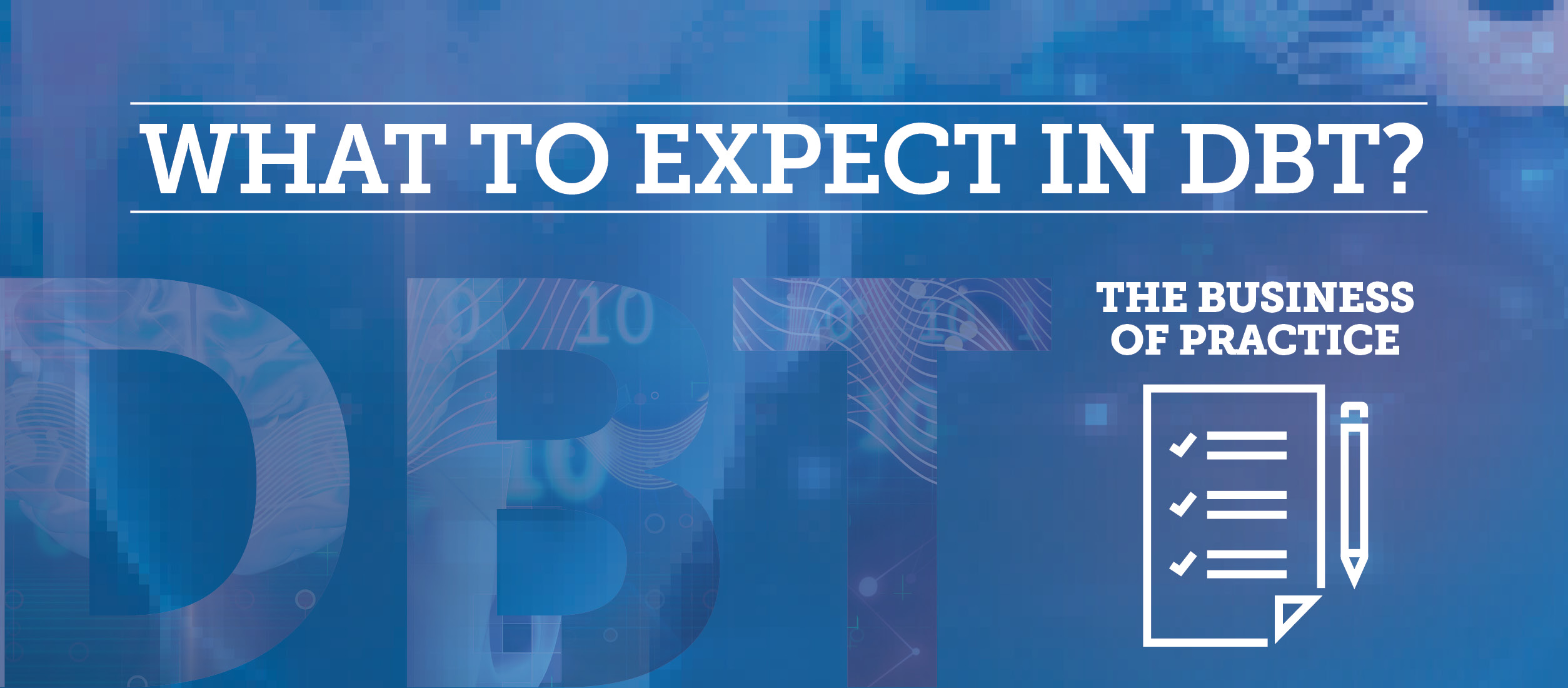What to Expect as a DBT Clinician?
DBT is a highly structured therapeutic intervention. It is an evidence-based treatment to help clients feel comfortable with negative emotions. DBT clinicians approach clients with an understanding that clients are doing the best they can with what they have at the moment.
- It is a highly prescribed intervention, and establishing shared goals is essential to bring a person joy and help them cultivate a life worth living.
- Clarity, precision, and compassion are of the utmost importance when conducting DBT.
- Clinicians should know what DBT intervention they utilize and why they utilize it.
- Likewise, clients should know what skill they are using and why they are using it. DBT clients have likely experienced chaos throughout their lives; therefore, clarity and predictability in therapy are necessary.
When conducting DBT, a clinician asks clients to “get rid of,” probably the only thing that has worked to get rid of their pain, e.g., self-harm, substance use, aggression. Forcing clients to stop doing what typically helps them to cope with intense emotions can be scary for them. For example, clients may be concerned that their pain will never get better, and they may feel anger that clinicians are “taking away” what works for them. But clinicians are aware that DBT is not just telling clients what not to do and getting rid of maladaptive behaviors – it is also telling clients what to do instead and how to do this. This direction is critical as DBT clients likely have difficulty effectively problem-solving.
Clinicians are aware and have to remind themselves and clients that repetition, using the skill time and time again, gets clients to maintain that skill in their “toolbox” and have it work most effectively when they need it.
Common Characteristics of DBT Clients
- Cognitive Instability
- Chronic suicidality
- Dissociation
- Paranoid ideation
- Black & white thinking
- Behavioral Instability
- Intentional self-injury
- Impulsivity
- Substance use
- Emotional Instability
- Severe or long-term emotional dysregulation
- Emotion regulation difficulties are not limited to a diagnosis of borderline personality disorder
- More broadly, these problems may present differently in men and women. For example, in men, it may be externalized (e.g., aggression), and in women, it may be internalized (e.g., self-harm).
- Intense mood swings
- Problems with anger and shame
- Low frustration tolerance
- Difficulties with a sense of self
- Feelings of emptiness
- In children and teens, this can present as “boredom.”
- Environmental and inter-personal instability
- History of chaotic and intense relationships
- Feeling disempowered and dehumanized in relationships
- Fear of abandonment
- History of trauma
Common Diagnoses
- Borderline personality disorder
- Adolescents with multiple problems
- PTSD
- Depression
- Anxiety
- Eating disorders
- Substance use disorders
- Aggressive and Violent behavior
DBT Assumptions about Clients
- Clients are doing the best they can
- Clients want to improve
- Clients must learn new behaviors in all relevant contexts of their life
- Clients cannot fail in DBT
- Clients may not have caused all their problems, but they have to solve them anyway
- Clients’ lives are unbearable as they are currently being lived
DBT Assumptions about Therapy
- The most caring thing a clinician can do is help clients change so they are closer to their own life goals
- The therapeutic relationship is a real relationship between equals
- There is reciprocal communication
- Warm engagement, responsiveness, genuineness, validation, self-disclosure
- DBT clinicians can fail
- DBT can fail, even if the clinician does not
- Clinicians conducting DBT need support






















